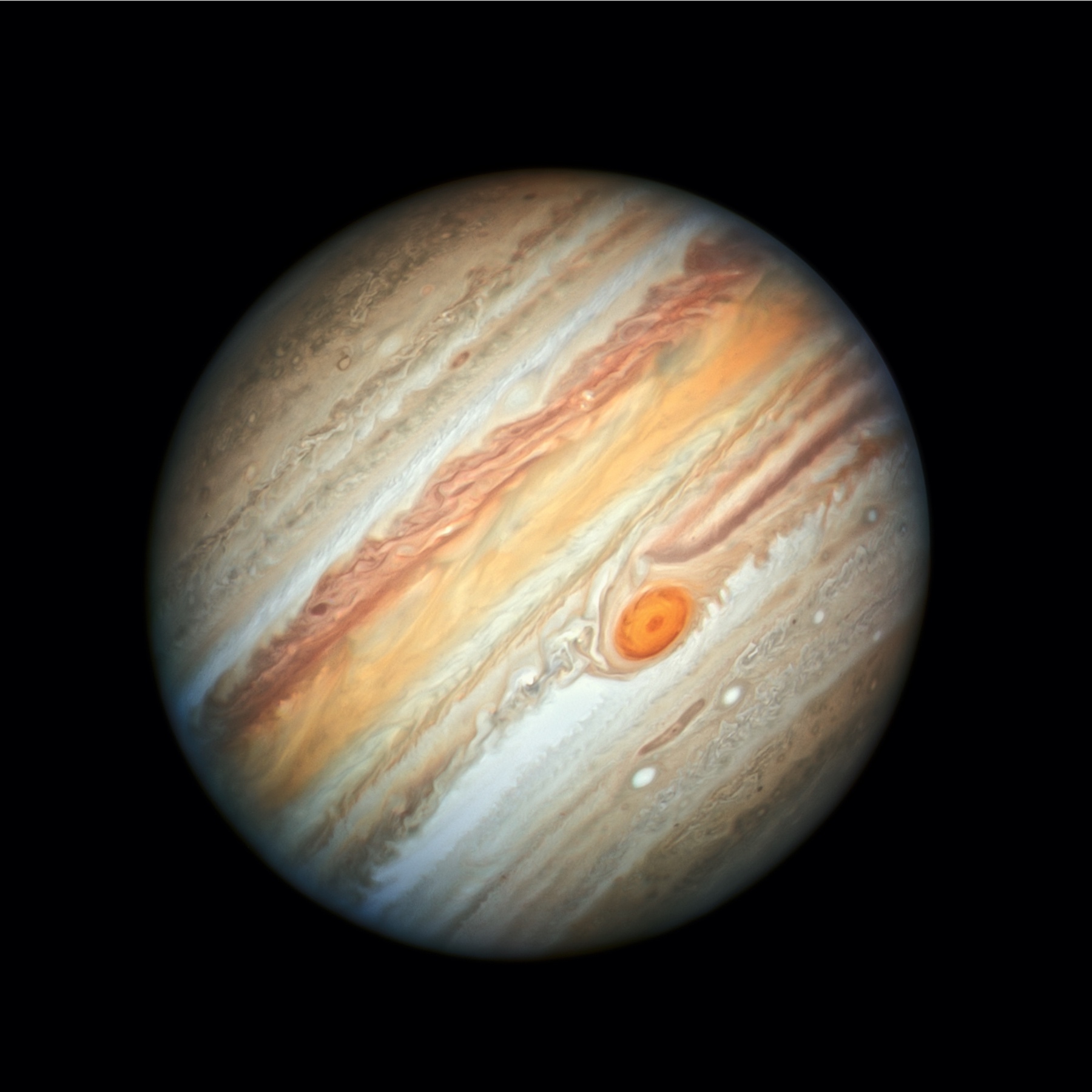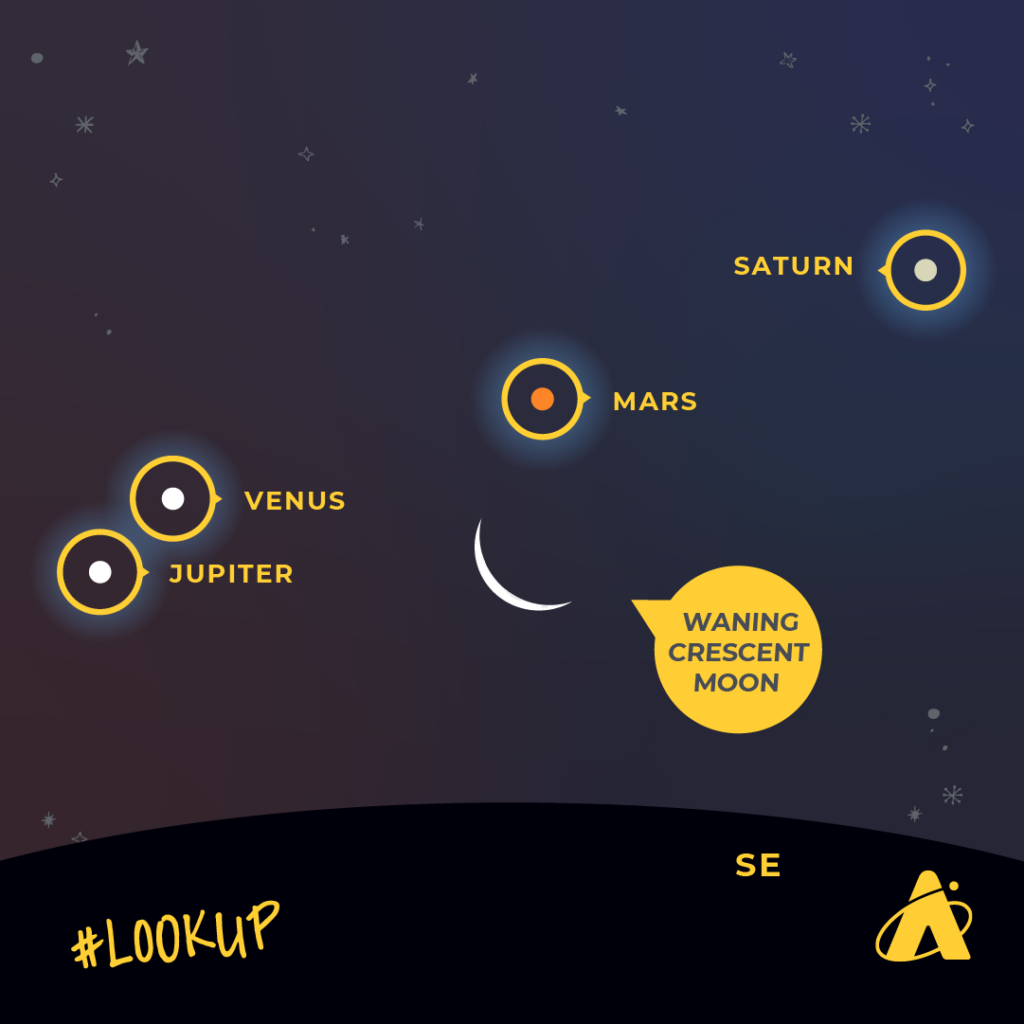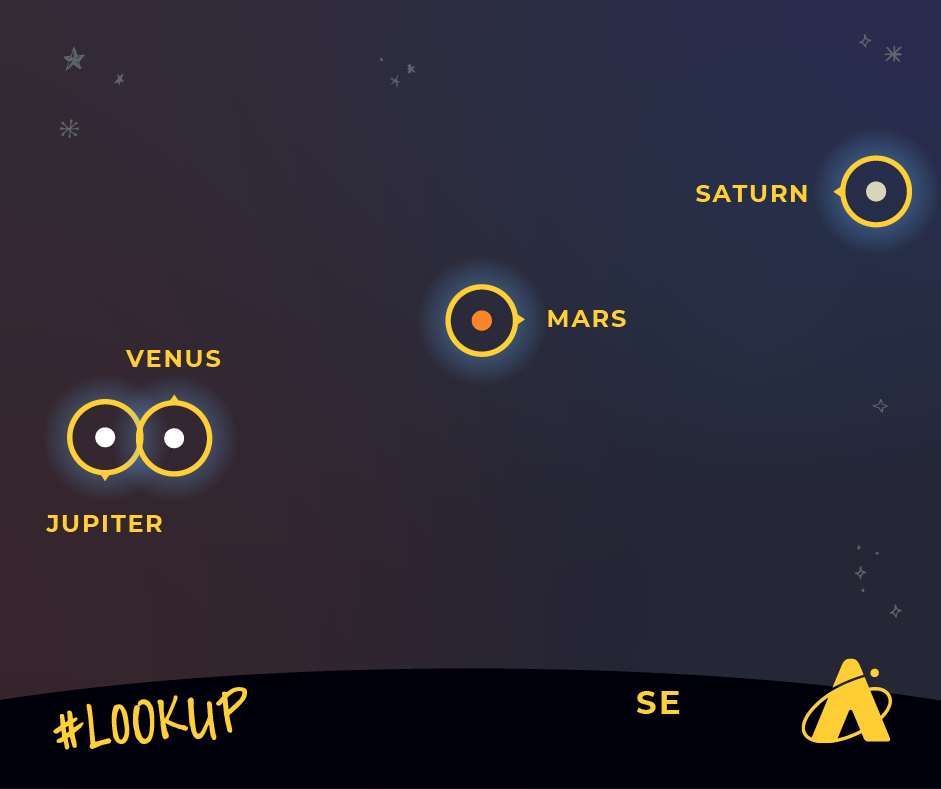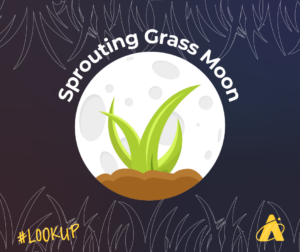Adler Skywatch: April 2022

Header Image: Hubble’s new portrait of Jupiter.
Header Image Credit: NASA, ESA, A. Simon (Goddard Space Flight Center), and M.H. Wong (University of California, Berkeley).
Before dawn breaks each morning, take a look at what is rising before the Sun this month, April 2022.
The first week of the month, the brightest planet, Venus, and the less-bright planets Saturn and Mars are clustered just above the east-southeast horizon about 45 minutes before sunrise. This month Saturn is slightly brighter than Mars. The two planets appear less than a half-degree apart on the mornings of April 4 and 5. They still appear only a few degrees apart by the second week of the month; but Saturn and Mars, as well as Venus, all appear to be moving away from each other as the mornings’ pass. By the third week of the month, the three planets form a slightly upward-sloping line about 20 degrees long, starting with Venus at the bottom, then Mars, and then Saturn.

By this time of the month, you may be able to spot one more planet, very close to the eastern horizon – Jupiter, the second brightest planet, just emerging from the rising Sun’s glare. By the fourth week of the month, Jupiter is noticeably closer to Venus in the east-southeast. That week a waning crescent Moon passes below the line formed by the four planets: below and between Saturn and Mars on April 25, below and between Mars and Venus on April 26, and below both Venus and Jupiter on April 27.

On the last morning of the month, look low in the east-southeast about 45 minutes before sunrise to see a spectacular conjunction of Venus and Jupiter, less than a degree apart from each other. You may remember the conjunction of Jupiter and Saturn in December 2020. Venus and Jupiter won’t be as close together now as Jupiter and Saturn appeared in 2020, but it will still be a beautiful sight to see! For the early birds out there, tune into Sky Observers Hangout on April 29, at 5:00 am CT, to learn more about how to observe this conjunction.
Though most of the planetary action occurs shortly before sunrise this month, you may be able to spot the elusive planet Mercury shortly after sunset late in the month. Try looking low in the west-northwest sky about 45 minutes after sunset April 21 through April 30. It gets dimmer but higher in the sky each evening thereafter. The evening of April 30, it appears a little to the left of the twinkling Pleiades star cluster, in the constellation Taurus.
This month the annual Lyrids meteor shower occurs. It’s one of the more average showers in terms of meteor count, with a peak of around 10 to 20 meteors per hour under very dark, very clear skies. This year the Lyrids are forecast to peak during the daylight hours of April 22; so the best times to watch for Lyrid meteors this year are most likely during the early-morning darkness on April 22, and again during the early-morning darkness of April 23. The Moon rises two to three hours after midnight on those dates, which will blot some of the fainter meteors from view.
A partial solar eclipse takes place on April 30, but it’s visible mainly over oceans and in small parts of southern South America and Antarctica. It’s not visible at all in North America or Central America.

The Full Moon rises on April 16 around sunset. Names for the Moon include the Pink Moon, Sprouting Grass Moon, or Egg Moon.
New Moon: April 1
First Quarter Moon: April 9
Full Moon: April 16
Last Quarter Moon: April 23
New Moon: April 30
(Please note: these descriptions are for the Chicago area, using Central time.)
Subscribe To Skywatch Wednesday This April
Tour the night sky with the Adler Planetarium’s Theaters Manager Nick, who uses cutting-edge visualizations, NASA images, and astrophotography to show you what you can see in the night sky throughout the year. Be sure to subscribe to learn more about upcoming celestial events!
Learn From Our Astronomy Educators
Watch exclusive live episodes of Sky Observers Hangout this April! This month the spring morning sky brings us a special treat: a close conjunction of Venus and Jupiter. Join us on April 29 at 5:00 am CT to learn where and when to observe this beautiful conjunction in your sky!






